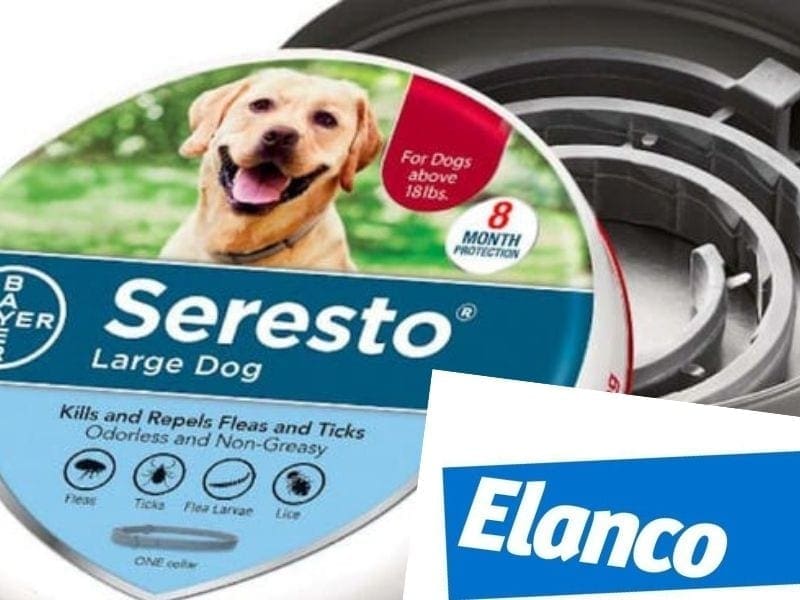Seresto Flea and Tick ‘killer’ collar parent company to make its case to House Oversight Subcommittee today
This afternoon, the House Committee on Oversight and Reform will hold a subcommittee hearing on Seresto flea and tick collars “examining why a product linked to more than 2,500 pet deaths remains on the market,” the hearing says in its title.
“The hearing will examine the EPA’s failure to regulate the Seresto collar as well as Elanco’s refusal to take action to protect pets and their owners from the collar’s harm,” the subcommittee states on its website. Listed as witnesses in the first Panel are Faye Hemsley & Omarion Hemsley; Thomas Maiorino, owners of deceased pets; in Panel 2:
Jeffrey Simmons
President and Chief Executive Officer
Elanco Animal Health Incorporated
Nathan Donley, Ph.D
Environmental Health Science Director
Center for Biological Diversity
Karen McCormack
Former Scientist, Policy Analyst, and Communications Officer (ret.)
Office of Pesticide Programs, Environmental Protection Agency
*Carrie Sheffield (minority witness)
Senior Policy Analyst
Independent Women’s Voice
Ahead of today’s hearing, TCR received the following statement from Elanco spokeswoman Keri McGrath:
Our CEO, Jeff Simmons, will appear at the Subcommittee’s hearing, and looks forward to answering the Subcommittee’s questions and for the opportunity to discuss the strong safety profile of Seresto and the important role it plays protecting pets from fleas and ticks, which can be vectors for diseases such as Rocky Mountain Spotted fever or Lyme disease.
Speaking to your other questions, numerous studies and the incident report data for Seresto demonstrate the product does not pose an unreasonable risk and has a strong safety profile, which is why the American Veterinary Medical Association opposed canceling Seresto’s EPA registration. Given the robust scientific evidence for Seresto’s strong safety profile, we are proud to stand behind the product as an important tool to protect pets from fleas and ticks and the damaging diseases they carry.
And, as you’ve accurately reported in past coverage, It’s critically important to understand that reports do not indicate cause. They are raw data and cannot be used to draw conclusions on what may have actually caused the issues. Further investigation and assessment are required to determine cause, often a veterinary exam, laboratory diagnostics, or necropsy, as appropriate. There are important factors that should be taken into consideration when assessing cases, including age of the dogs and other treatments the dogs were taking at the time – this is where the importance of speaking directly with the attending veterinarian as the medical expert who can assess cause is so important.
Further, reports must be viewed as a percentage of the number of products sold, duration of collar application, and data on the general pet population. We’ve provided to the EPA additional detailed information on incident reports we’ve received to help the agency thoroughly evaluate the product.
To put this into context…. since Seresto was approved in 2012, more than 33 million collars have been used to protect pets from fleas and ticks in the U.S. In 2020 alone, about 7 million Seresto collars were applied to pets in the U.S., with the product indicated for up to eight months of use.
Importantly, the rate of incident reports for pets wearing Seresto collars is low and has been decreasing over time. In 2021, it was 17.26 per 10,000 collars sold. That’s less than a fifth of 1% reporting rate across-the-board. More than 93% of incident reports received for Seresto pet collars in the U.S. from January 2013 to December 2021 are classified after careful analysis as “minor” (70.65%) or “moderate” (22.59%), with the vast majority being redness or irritation at the site of the collar. In analyzing all reports, the data show no established link between the active ingredients in Seresto and pet death.
Further, the incidence of flea- and tick-borne diseases is on the rise – CDC estimates approximately 500,000 cases of Lyme Disease and Rocky Mountain Spotted Fever annually. Climate change may accelerate this trend. Seresto offers pet owners a much-needed, cost-effective option for protecting their pets and people as well.
Seresto is authorized in more than 80 countries. Its safety and efficacy are continuously monitored and scrutinized by the competent regulatory bodies around the world as well as via internal processes. We use a similar, science-based approach to our ongoing monitoring and analysis of Seresto as we do for veterinary medicinal products globally including for our FDA-regulated products.

